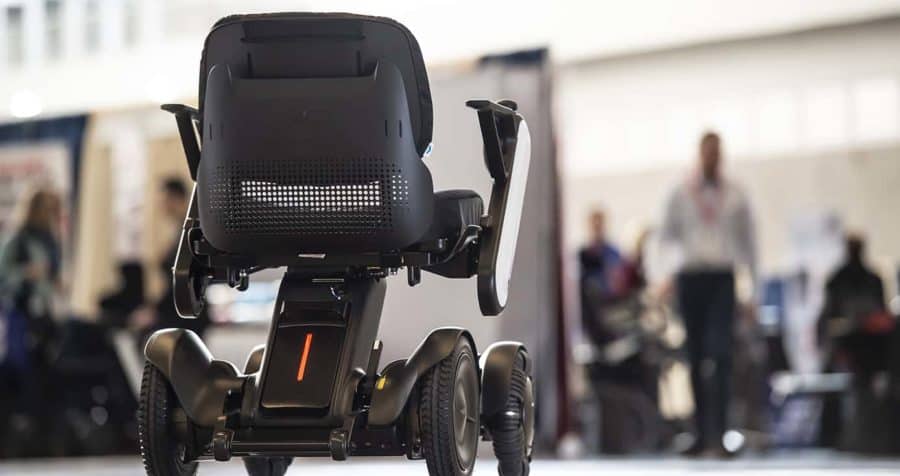Two recent studies from the University of Pittsburgh, published in the International Journal of Telerehabilitation, show that telehealth can be effective in providing complex rehabilitation technology—devices like wheelchairs that are custom-fitted for individuals—to veterans.

Brad Dicianno
The research was conducted at the Human Engineering Research Laboratories (HERL), which is funded by a partnership between Pitt and the VA Pittsburgh Healthcare System.
The first study involved a cohort of veterans with disabilities who were assessed by a therapist through telehealth at their homes for complex rehabilitation technology (CRT), such as adjustments to wheelchairs, and then compared to a matched sample of non-veterans who were assessed through traditional in-person methods. Pre- and post-visit scores on their mobility found similar outcomes.
The second study found veterans and providers were satisfied with using telehealth for their needs and that veterans often preferred telehealth.
“Providing properly fitted mobility equipment is a consumer-centered process that involves several steps, interdisciplinary communication and assessment of the person’s natural living situation,” said Brad Dicianno, study investigator, HERL medical director and associate professor in Pitt’s School of Medicine. “Regardless of the current pandemic, for people with disabilities, accessing appropriate services can be a challenge, especially given limited mobility, medical conditions that contraindicate travel, broken down equipment or limited transportation.”
One advance resulting from the COVID-19 pandemic is expanded remote health care services. This is especially significant for people in high-risk groups, said Dicianno, who is also an associate professor with Pitt’s Department of Rehabilitation Science and Technology. People with severe disabilities depend on access to tailored equipment, he said, not only to meet medical needs but to function and participate in their communities.

Mark Schmeler
“These results are consistent with our earlier studies with non-veterans and support the use of telehealth strategies as an option for all CRT users. When applied appropriately, telehealth can complement traditional in-person procedures and in some cases, replace them,” said Mark Schmeler, vice chair for education and training and associate professor in Pitt’s Department of Rehabilitation Science and Technology, part of the School of Health and Rehabilitation Sciences.
“Veterans Affairs is recognized as a world leader in terms of development and deployment of telehealth services and is a perfect setting for testing innovative models of care,” Dicianno said. “These publications show that we can use telerehabilitation to assess and provide wheelchairs to veterans in their homes in rural communities.”
The findings provide further understanding to the benefits of telehealth for complex rehabilitation technology and can serve as evidence to support continued investigation and use of these methods beyond the current public health emergency, said Schmeler, who is a practicing occupational therapist and certified assistive technology professional.
“I have personally noted more meaningful information when I can observe a person engaged in mobility-related activities of daily living in their natural environment versus what is assessed in a clinical setting,” he said.
The research was funded through the MyVA Access Improvement Project, a VA partnership between its Office of the Under Secretary for Health and Office of Rural Health partnership.
If our reporting has informed or inspired you, please consider making a donation. Every contribution, no matter the size, empowers us to continue delivering accurate, engaging, and trustworthy science and medical news. Independent journalism requires time, effort, and resources—your support ensures we can keep uncovering the stories that matter most to you.
Join us in making knowledge accessible and impactful. Thank you for standing with us!

